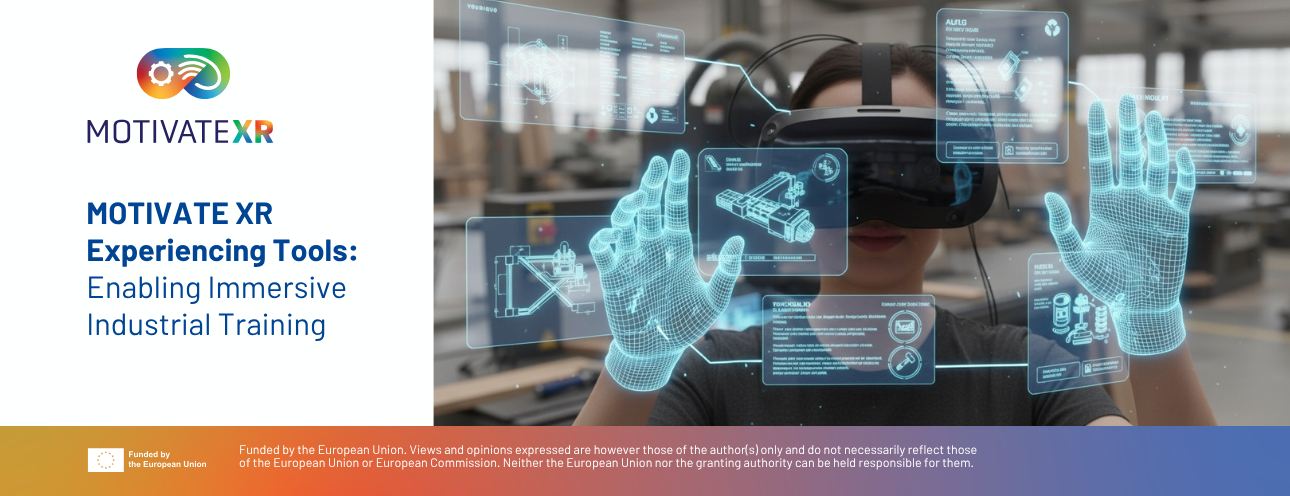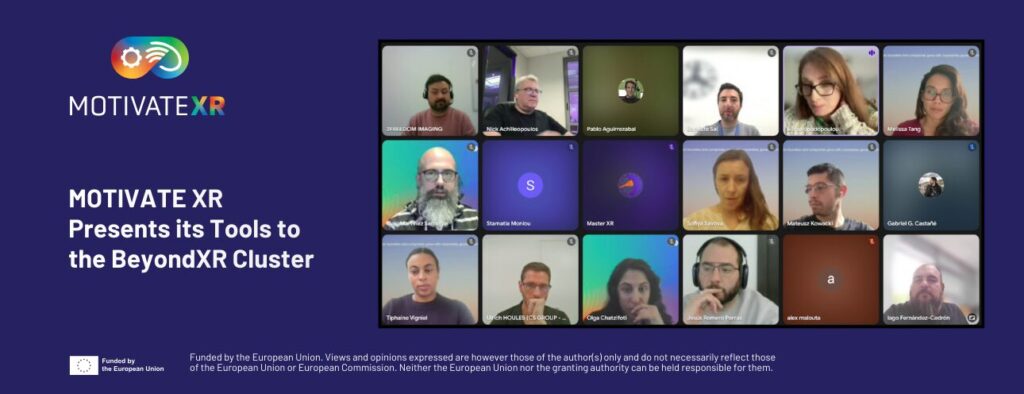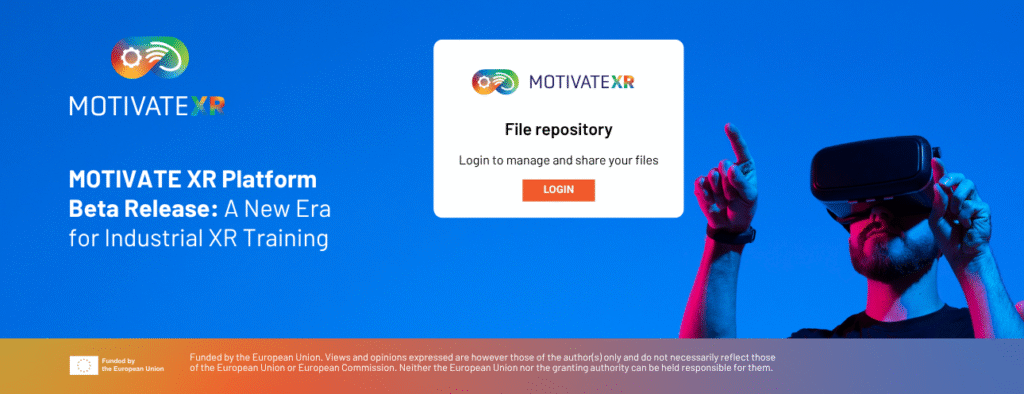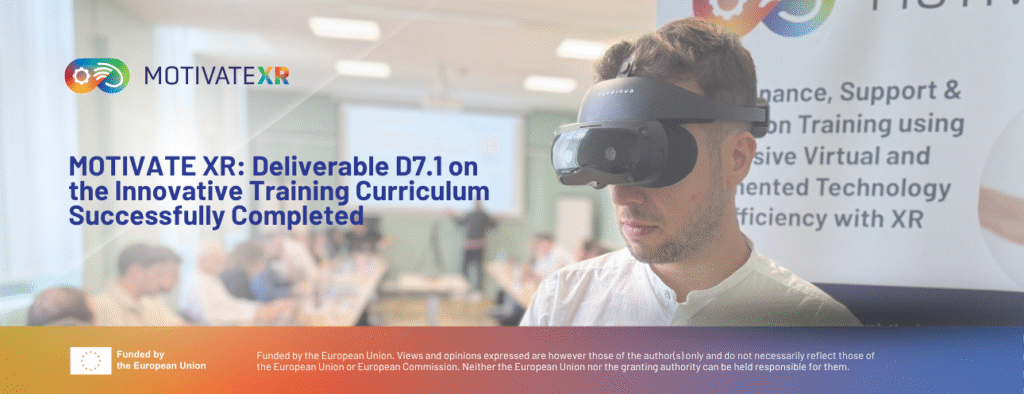MOTIVATE XR is a pioneering initiative designed to revolutionise how industries train, assist, and collaborate using Extended Reality (XR). By combining immersive technologies with intuitive tools, the platform empowers users – from technicians to trainers – to create, share, and experience XR content without needing programming skills.
Whether it’s assembling complex machinery, guiding maintenance tasks, or supporting remote operations, MOTIVATE XR offers a unified ecosystem that brings together hardware, software, and smart services to make XR accessible, scalable, and impactful. The project is part of Horizon Europe and aims to support digital transformation across sectors by making XR tools more usable and interoperable.
MOTIVATE XR also promotes inclusivity and accessibility, ensuring that XR technologies can be adopted by organisations of all sizes, from large manufacturers to small enterprises. Its modular approach allows for tailored solutions that meet specific industrial needs, making it a versatile platform for the future of work.
The Experiencing Phase: Bringing XR to Life
At the heart of MOTIVATE XR lies a three-phase workflow: Authoring, Sharing, and Experiencing. While authoring and sharing focus on creating and distributing XR content, the experiencing phase is where the magic happens – where users interact with immersive scenarios in real time, often in collaborative or remote environments. This structured approach fosters collaboration, reduces costs, and enhances efficiency in industrial settings.
The experiencing phase is particularly important because it connects the digital content with real-world applications. It allows users to visualise procedures, receive guidance, and interact with virtual elements in their physical environment. This phase supports a wide range of use cases, including training simulations, remote assistance, and operational support.
Deliverable D5.1 focuses on this third phase, presenting the beta version of the Experiencing Tools: the software, services, and hardware that allow users to engage with XR content in meaningful ways. These tools are designed to support industrial training, remote assistance, and operational guidance, all while ensuring compatibility across devices and platforms.

Figure 1. MOTIVATE XR Three-Phase Workflow
Five Pillars of XR Experience in MOTIVATE XR
The Experiencing Tools are divided into five interconnected components, each addressing specific challenges in industrial training, support, and collaboration. These components are built on existing platforms, extended to work together and form a cohesive ecosystem that prioritises usability, scalability, and interoperability across diverse industrial contexts.
1. Experiencing Tools
These are the software applications that render XR content and allow users to interact with it across platforms and devices. They transform how industries approach training and operations by enabling immersive, dynamic, and adaptable experiences. MOTIVATE XR includes the following tools:
- KAYROX Players: Web-based and native apps that deliver AR, MR, and VR content, compatible with smartphones, tablets, and headsets.
- INSCAPE VTS Player: A photorealistic simulator used for training and operational guidance, particularly in aerospace and defence.
- RTXR Player: An AR tool focused on step-by-step industrial training, especially in assembly tasks.
These tools are designed to be intuitive and device-agnostic, streamlining the creation and execution of XR content in complex environments. They also support real-time rendering and dynamic content filtering, which enhances the user experience and ensures adaptability to evolving industrial needs.
2. Experiencing Services
These backend services enrich the XR experience by integrating real-time data, artificial intelligence, and semantic technologies. They personalise learning, automate assistance, and enhance operational support. Key services include:
- MIRA: A digital twin platform that streams real-time data into XR scenarios, improving fidelity and relevance.
- Vision Module (in development): Enables object recognition and scene understanding to support smarter guidance.
- AI Assistant Chatbot: Translates manuals and procedures into conversational support, allowing users to ask questions and receive contextual help during XR sessions.
These services ensure that XR experiences are not just visual, but also intelligent and responsive. By integrating contextual data and AI-driven insights, they help users make informed decisions and complete tasks more efficiently.
In modern industrial and operational settings, extended reality (XR) technologies enable experts to support, guide, and train users even when they are not physically on site. Two complementary categories of tools embody this remote-expert paradigm: Remote Training Tools, which allow instructors to deliver and adapt learning experiences from a distance, and Remote Assistance Tools, which enable specialists to provide real-time guidance and supervision during live operations. Together, they bring expert knowledge directly to the point of need – enhancing safety, efficiency, and adaptability across distributed environments.
3. Remote Training Tools
Training doesn’t always happen in person. These tools allow instructors to adapt and guide training scenarios remotely, ensuring flexibility in fast-changing industrial environments.
- Narrative Editor Live Function (planned): Will enable real-time updates to training scenarios, allowing trainers to modify content on the fly and synchronise it with XR devices.
Interactive modules provide instant feedback, helping users refine skills in a safe, virtual setting while reducing costs and improving efficiency. These tools are especially useful in industries where procedures evolve rapidly, and training needs to be updated frequently.
4. Remote Assistance Tools
These tools facilitate real-time supervision and support during complex operations, bridging the gap between on-site technicians and remote experts.
- KAYROX Assistance: A mixed reality teleassistance system that enables remote experts to guide workers using live video, annotations, and shared 3D content.
- Streaming Editor: A desktop tool that allows trainers to monitor XR sessions in real time and provide verbal guidance.
By enabling collaborative problem-solving, these tools reduce downtime, travel expenses, and operational errors. They also improve safety and ensure that workers receive expert support when needed.
Finally, XR experiences need to be played on specific hardware that can create an immersive environment for enhanced training or augmented maintenance operations.
5. Experiencing Hardware
To interact with XR content, users need the right hardware. MOTIVATE XR introduces:
- LeonardoXR: A next-generation European smart headset, featuring gesture recognition, 4G/5G connectivity, and ergonomic design for industrial use.
This hardware ensures a seamless and intuitive experience, supporting hands-free interaction, real-time collaboration, and precision-driven tasks in demanding environments. It is designed to be comfortable for extended use and compatible with various XR applications.
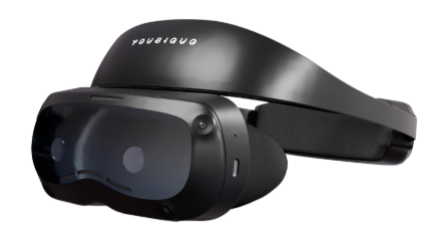
Figure 2. LeonardoXR: European state-of-the-art XR glasses
What’s New in the Beta Release?
The beta version of the Experiencing Tools marks a major milestone in the MOTIVATE XR project. Key achievements include:
- Enhanced compatibility: Tools now support a wide range of XR devices, including video see-through headsets like LeonardoXR.
- Improved user experience: Features like spatial persistence and dynamic content filtering make XR sessions smoother and more personalised.
- Real-time data integration: MIRA now connects with XR players to display live telemetry from digital twins.
- Remote collaboration: KAYROX Assistance and Streaming Editor enable experts to support users remotely, with shared views and interactive guidance.
- Gesture-based interaction: LeonardoXR’s gesture recognition system allows users to control XR content without physical input devices.
These developments bring MOTIVATE XR closer to its goal of delivering a fully integrated, user-friendly XR ecosystem. The beta release also serves as a foundation for future enhancements and industrial validation.
Interoperability: Building a Cohesive Ecosystem
One of the project’s long-term goals is to ensure that all tools – whether for authoring or experiencing – can work together seamlessly. In this beta phase, significant progress has been made in designing an interoperability framework that will allow different tools to share data and collaborate in real time.
While the technical details are still evolving, the vision is clear: a modular, scalable system where XR tools can communicate effortlessly, enabling richer and more collaborative experiences. This interoperability is essential for creating a unified platform that can adapt to various industrial workflows and user needs.
A Glimpse into the Field: Use Case Scenario
Imagine a technician working in a remote electrical facility or installation. Equipped with the LeonardoXR headset, they access a step-by-step AR training module through one of the MOTIVATE XR players (KAYROX, Inscape VTS, RTXR…). As they follow the guided instructions, real-time data from the electrical installation is streamed via MIRA, and an AI chatbot is available to answer questions about technical specifications or safety procedures.
If the technician encounters an unexpected issue, they can instantly connect with a remote expert using KAYROX Assistance, who provides live annotations and verbal guidance. This seamless integration of tools reduces downtime, enhances safety, and empowers the technician to complete the task efficiently.
Expected Impact Across Industries
The impact of MOTIVATE XR extends across multiple industrial sectors. In manufacturing, it enables faster onboarding of workers and reduces training costs. In energy and utilities, it supports remote maintenance in hard-to-reach locations. In aerospace and defence, it enhances procedural accuracy and safety. In the home appliance sector, it allows even end-users to perform some maintenance operations.
By integrating XR into daily workflows, MOTIVATE XR helps organisations reduce human error, improve operational efficiency, and foster continuous learning. Moreover, its emphasis on interoperability and accessibility ensures that even small and medium-sized enterprises can benefit from advanced XR capabilities without heavy infrastructure investments.
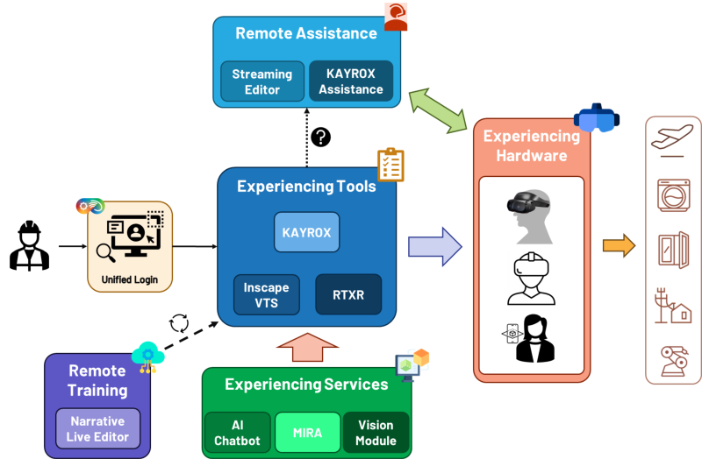
Figure 3. MOTIVATE XR Experience Phase Workflow
Looking Ahead: What Comes Next
The beta release is just the beginning. In the coming phases, MOTIVATE XR will:
- Integrate semantic-driven AI to enable context-aware assistance and adaptive training scenarios.
- Introduce multilingual support to ensure accessibility across European industries.
- Launch industrial pilots to validate the tools in real-world settings.
- Finalise the interoperability framework to ensure long-term scalability.
These next steps will help refine the platform and demonstrate its value in practical applications. By 2027, the project aims to deliver a fully operational XR platform that meets the needs of European industries, from large manufacturers to independent technicians.
Conclusion: A Step Closer to Smarter Industry
As a flagship initiative under the European Union’s Horizon Europe programme, MOTIVATE XR embodies the spirit of innovation and digital transformation. By integrating immersive technologies into industrial workflows, the project supports the EU’s strategic goals – ranging from sustainability and resilience to technological sovereignty – while fostering a competitive, agile industrial landscape.
Beyond its technical advancements, MOTIVATE XR is a people-centric platform. Its no-code, collaborative tools empower users – from large enterprises to independent technicians – to train more effectively, work with greater precision, and adapt swiftly to evolving challenges. The beta release of the Experiencing Tools marks a pivotal milestone, demonstrating how extended reality (XR) can transition from a novel concept to an essential tool in everyday industrial operations.
Looking ahead, the project’s roadmap prioritises real-world validation through industrial pilots, expansion of cloud-based services, and refinement of AI-driven functionalities. With a target final release in early 2027, MOTIVATE XR aims to establish XR as a standard, not a novelty, in sectors such as manufacturing, maintenance, and training.
By bridging the gap between cutting-edge technology and practical application, MOTIVATE XR is not merely shaping the future of industrial work – it is redefining it. Through cross-sector collaboration and user-focused innovation, the project paves the way for a smarter, more connected industrial ecosystem, where immersive technologies are a cornerstone of progress.
Authors

TECNALIA
Pablo Aguirrezabal, a Deusto Computer Science graduate, is a Senior Researcher at Tecnalia (since 2011), focusing on image recognition and 6D Pose estimation for his industrial PhD. He’s led diverse projects in VR, AR, and Deep Learning across Industry 4.0 and cultural heritage, contributing to numerous publications. His prior roles include eHealth research at DeustoTech and an associate professorship in AR/VR at ESIC.

TECNALIA
Iñaki Martínez-Sarriegui, Telecommunications Engineer with 20 years of experience in tech innovation. Holds an MSc in Telemedicine and an international PhD (cum laude) in Biomedical Engineering. Led R&D projects in AI, Big Data, LiFi, and XR for media. Currently Project Manager at Tecnalia, driving computer vision and XR initiatives and securing public funding through competitive proposals.
